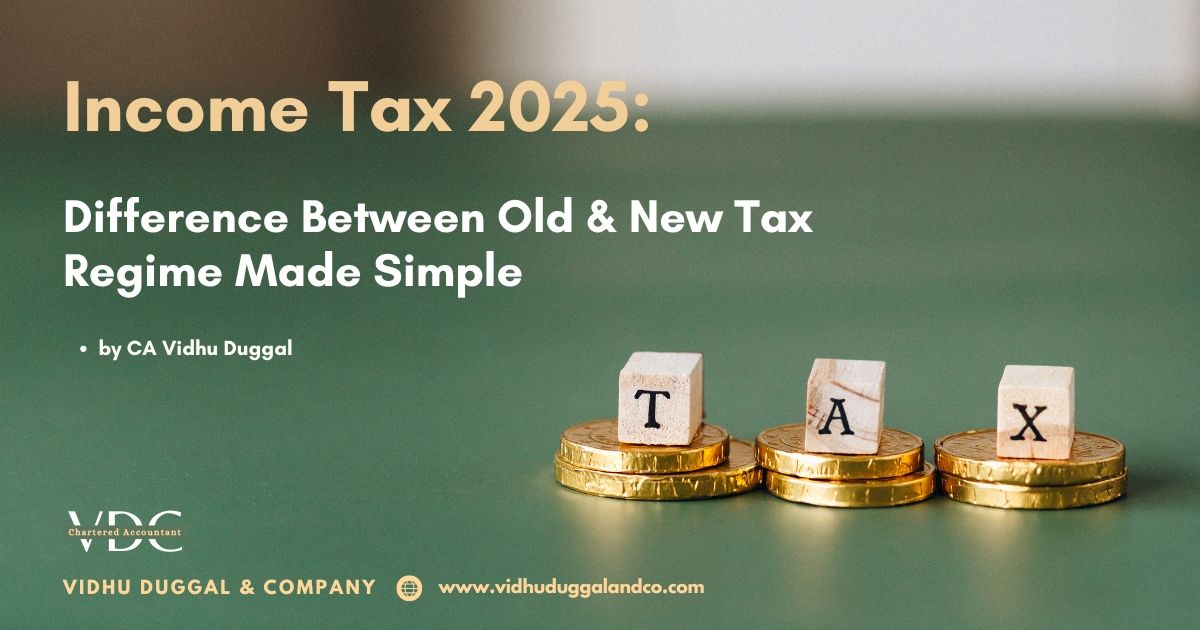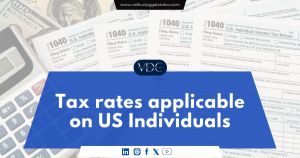Understanding the Indian income tax structure is critical for every taxpayer, especially now that the New Tax Regime (NTR) has become the default tax regime from FY 2023-24 onwards. Whether you're a salaried employee, self-employed professional, or investor, choosing between the Old Regime and the New Regime can significantly impact your annual tax outgo.
In this article, we’ll break down the differences between the two regimes for Assessment Year 2025-26 (FY 2024-25), with detailed comparisons, pros, cons, and who should choose what.
What Are the Two Tax Regimes?
India now offers two tax structures:
Old Tax Regime
👉 Available for decades
👉 Allows various exemptions and deductions
👉 Includes standard deduction, HRA, 80C, 80D, LTA, etc.
New Tax Regime (Section 115BAC)
-
👉 Introduced in Budget 2020, revamped in Budget 2023
-
👉 Offers lower tax rates
-
👉 No/limited exemptions or deductions allowed
Tax Slab Comparison (FY 2024-25)
Old Regime (with deductions)
👉 Basic exemption limit is ₹3 lakh for senior citizens (60+), ₹5 lakh for super senior citizens (80+).
New Regime (FY 2024-25 onwards – Default)
👉 Rebate under Section 87A is now available for income up to ₹7 lakh (NTR), i.e., zero tax if income ≤ ₹7 lakh.
Key Differences at a Glance

Example Comparison: ₹10 Lakh Income
Let’s assume an individual with ₹10 lakh income.
Under Old Regime:
-
👉 Gross Income: ₹10,00,000
-
👉 Deductions under 80C: ₹1,50,000
-
👉 80D (Health Insurance): ₹25,000
-
👉 Standard Deduction: ₹50,000
-
👉 Net Taxable Income = ₹7,75,000
-
👉 Tax Liability (approx.): ₹67,500 + cess = ₹70,200
Under New Regime:
-
👉 No major deductions allowed
-
👉 Tax on ₹10 lakh as per new slabs = ₹60,000 + cess = ₹62,400
👉 Who saves more?
If you claim fewer deductions, the New Regime is better.
If you use full 80C, 80D, HRA, the Old Regime may be more tax-efficient.
Who Should Choose Which Regime?
Choose New Regime if:
-
👉 You don’t invest much in tax-saving instruments
-
👉 You have low or no HRA/home loan benefits
-
👉 You want a simplified tax filing experience
-
👉 Your income is under ₹7 lakh – you’ll pay zero tax
Stick to Old Regime if:
-
👉 You claim full 80C + 80D + HRA + home loan interest
-
👉 You prefer long-term savings-based deductions
-
👉 You are a salaried individual with major exemptions
How to Choose the Regime?
-
👉 For salaried individuals: You can choose/change regime every year before filing your return.
-
👉 For business/professional income: You can switch only once, and then revert only once in lifetime.
Use the new ITR forms or employer declaration to specify your regime during the financial year.
Recent Updates (as of FY 2024-25):
-
👉 New Tax Regime is the default – unless you opt out
-
👉 Standard deduction of ₹50,000 now also allowed in New Regime
-
👉 Leave encashment exemption limit increased to ₹25 lakh for non-govt employees
-
👉 Increased 87A rebate (₹7 lakh limit in NTR)
Final Thoughts from CA Vidhu Duggal
While the New Regime is simpler and beneficial for many, it’s not automatically better for everyone. Your choice must depend on:
-
👉 Your income structure
-
👉 Deductions available to you
-
👉 Your financial planning style
It’s wise to compute tax under both regimes before filing your ITR. Even if the new regime looks appealing, a few smart investments or housing benefits can tilt the scale back in favor of the old regime.
Tax planning is personal — and should be strategic, not automatic.
Need Help?
Confused about which tax regime is right for you in 2025?
Connect with CA Vidhu Duggal for a personalized tax assessment, smart planning, and expert return filing support.


















